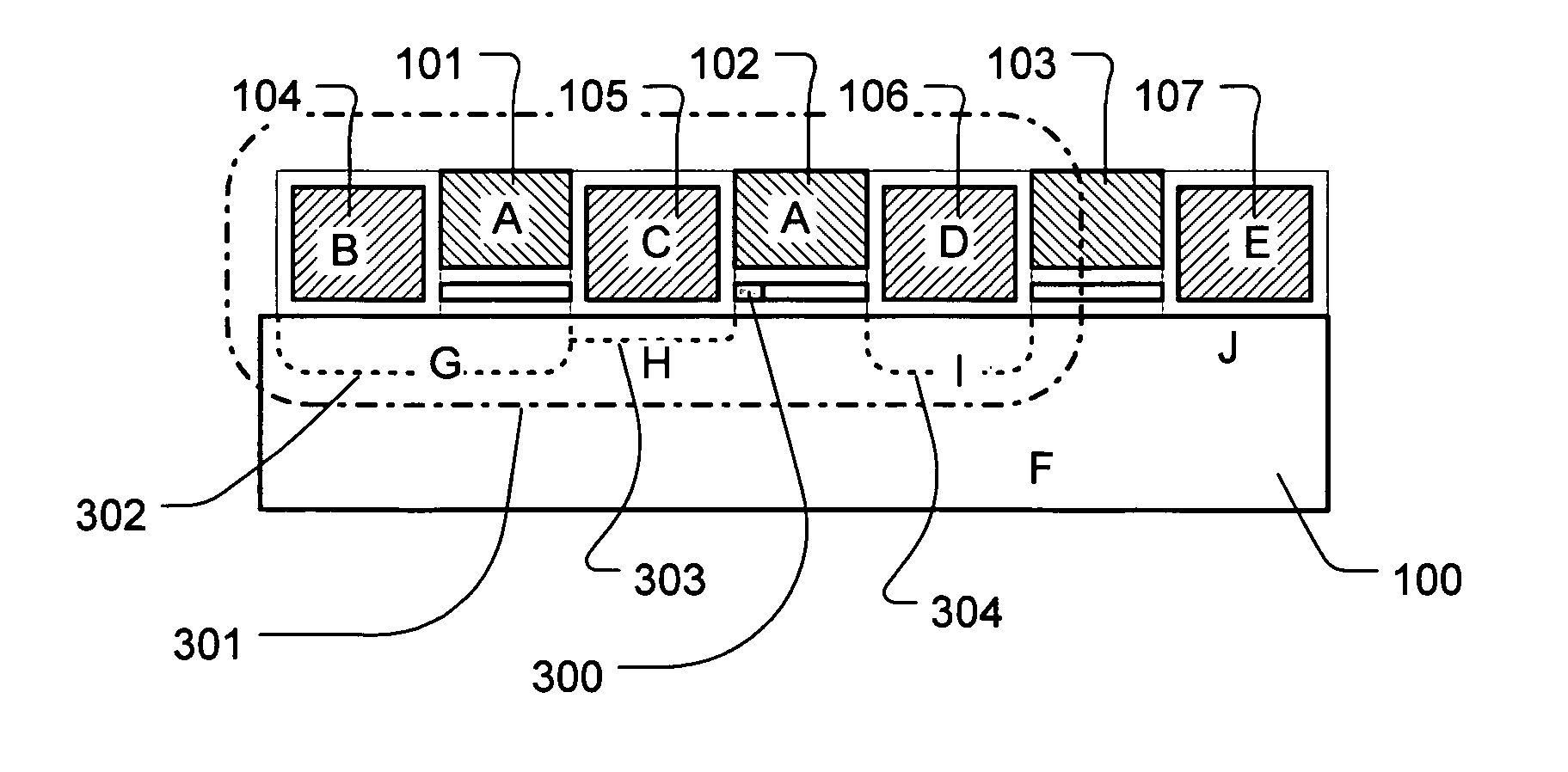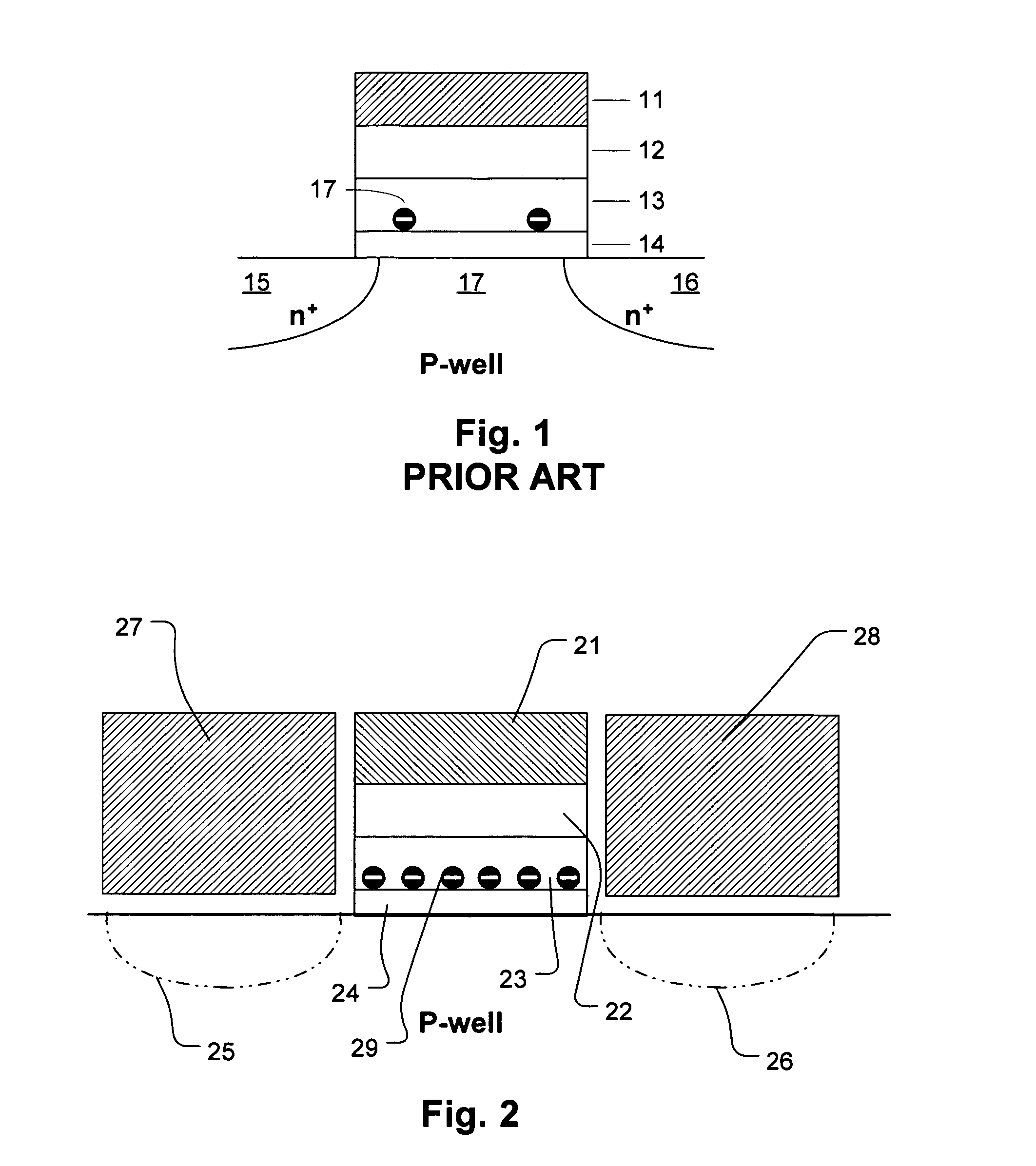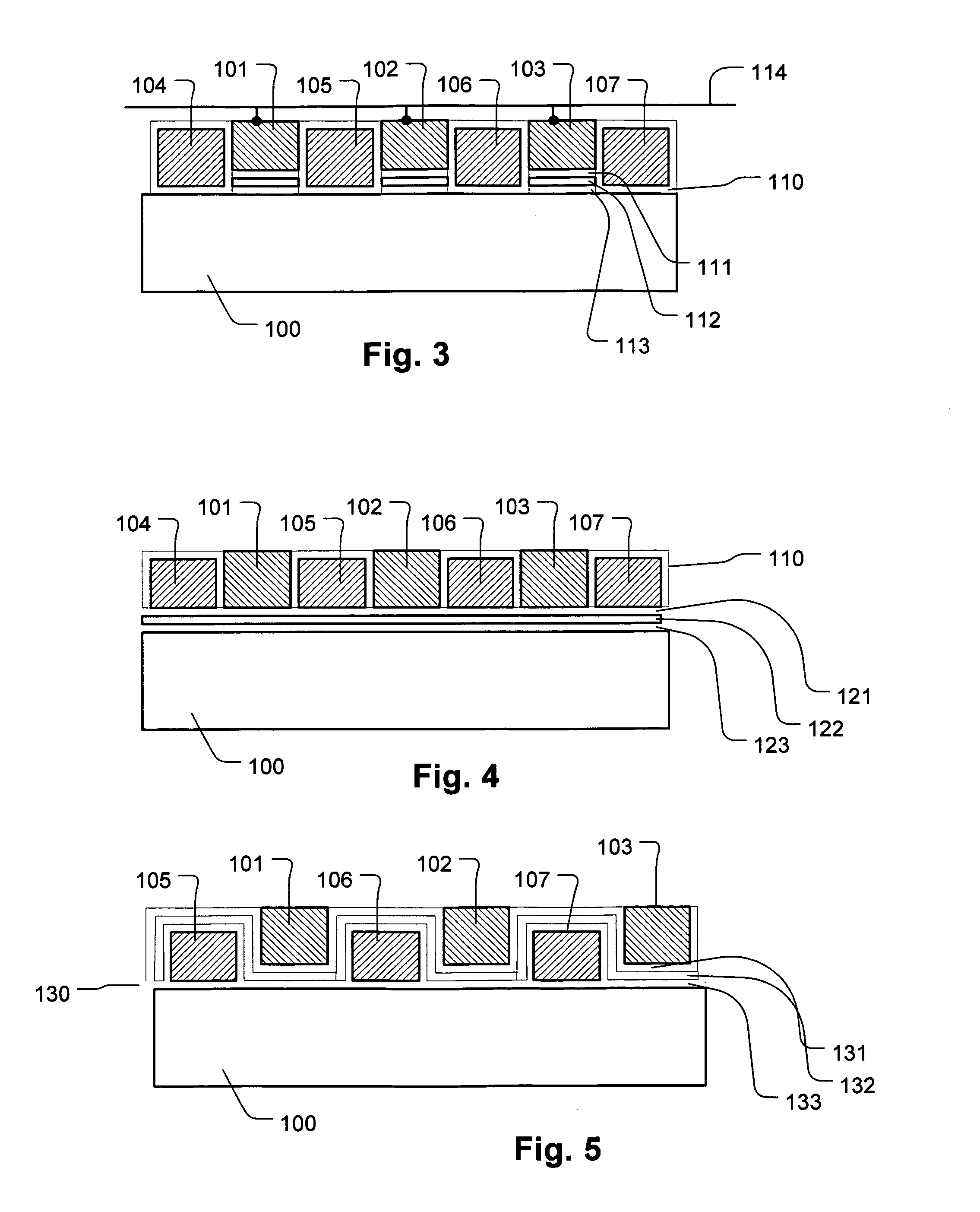Inversion bit line, charge trapping non-volatile memory and method of operating same
a non-volatile memory and bit line technology, applied in the field of electric programmable and erasable, non-volatile memory, can solve the problems of large threshold voltage vt distribution of erase, poor charge retention, large threshold voltage vt distribution, etc., and achieve low current high-speed programming and easy scaling
- Summary
- Abstract
- Description
- Claims
- Application Information
AI Technical Summary
Benefits of technology
Problems solved by technology
Method used
Image
Examples
Embodiment Construction
[0045]A detailed description of embodiments of the present invention is provided with reference to the FIGS. 1–16.
[0046]FIG. 1 is a simplified diagram of a charge trapping memory cell of the prior art. The substrate includes n+ doped regions 15 and 16, and a p-doped region 17 between the n+ doped regions 15 and 16. The n+ doped regions 15 and 16 provide diffusion lines that act as source and drain terminals. The remainder of the memory cell includes a charge trapping structure including a bottom dielectric 14 on the substrate, a charge trapping layer 13 on the bottom dielectric 14 (bottom oxide), a top dielectric 12 (top oxide) on the charge trapping layer 13, and a control gate 11 on the top dielectric 12. Typically, the control gate 11 comprises n-type polysilicon, and is coupled to a word line (not shown). The charge trapping structure has trapped charge in the charge trapping layer 13 such as represented by electron 17. Typically, such cells are erased by band-to-band tunneling ...
PUM
 Login to View More
Login to View More Abstract
Description
Claims
Application Information
 Login to View More
Login to View More - R&D
- Intellectual Property
- Life Sciences
- Materials
- Tech Scout
- Unparalleled Data Quality
- Higher Quality Content
- 60% Fewer Hallucinations
Browse by: Latest US Patents, China's latest patents, Technical Efficacy Thesaurus, Application Domain, Technology Topic, Popular Technical Reports.
© 2025 PatSnap. All rights reserved.Legal|Privacy policy|Modern Slavery Act Transparency Statement|Sitemap|About US| Contact US: help@patsnap.com



